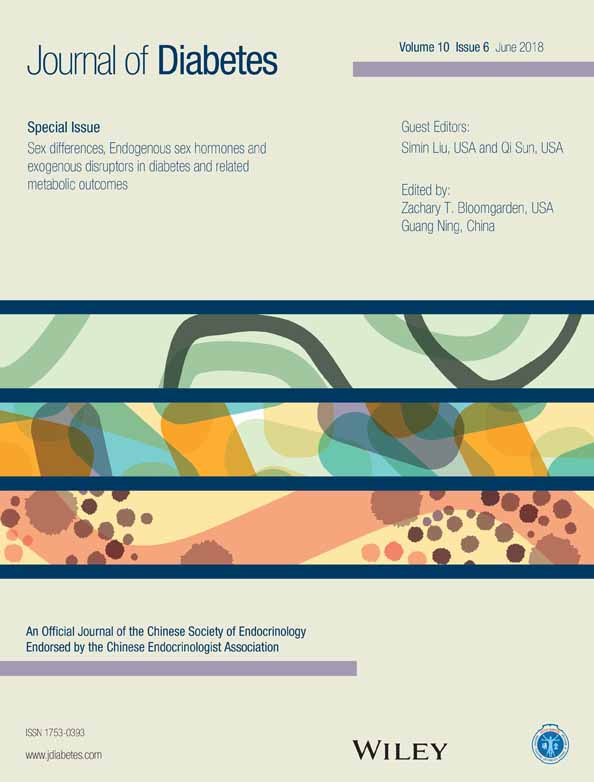Relationship between dietary carbohydrates intake and circulating sex hormone-binding globulin levels in postmenopausal women
在绝经后妇女中膳食碳水化合物摄入量与血液循环中性激素结合球蛋白水平的关系
Abstract
enBackground
Low circulating levels of sex hormone-binding globulin (SHBG) have been shown to be a direct and strong risk factor for type 2 diabetes, cardiovascular diseases, and hormone-dependent cancers, although the relationship between various aspects of dietary carbohydrates and SHBG levels remains unexplored in population studies.
Methods
Among postmenopausal women with available SHBG measurements at baseline (n = 11 159) in the Women's Health Initiative, a comprehensive assessment was conducted of total dietary carbohydrates, glycemic load (GL), glycemic index (GI), fiber, sugar, and various carbohydrate-abundant foods in relation to circulating SHBG levels using multiple linear regressions adjusting for potential covariates. Linear trend was tested across quartiles of dietary variables. Benjamini and Hochberg's procedure was used to calculate the false discovery rate for multiple comparisons.
Results
Higher dietary GL and GI (both based on total and available carbohydrates) and a higher intake of sugar and sugar-sweetened beverages were associated with lower circulating SHBG concentrations (all P trend < 0.05; Q -values = 0.04,0.01, 0.07, 0.10, 0.01, and <0.0001, respectively). In contrast, women with a greater intake of dietary fiber tended to have elevated SHBG levels (P trend = 0.01, Q -value = 0.04). There was no significant association between total carbohydrates or other carbohydrate-abundant foods and SHBG concentrations.
Conclusions
The findings suggest that low GL or GI diets with low sugar and high fiber content may be associated with higher serum SHBG concentrations among postmenopausal women. Future studies investigating whether lower GL or GI diets increase SHBG concentrations are warranted.
摘要
zh背景
虽然既往还没有一项人群研究调查过不同的膳食碳水化合物摄入与性激素结合球蛋白(sex hormone-binding globulin, SHBG)水平之间的关系, 但是目前已经证实了血液循环中低水平的SHBG是2型糖尿病、心血管疾病以及激素依赖性癌症的直接与强烈危险因素。
方法
在妇女健康倡议研究中(Women’s Health Initiative), 使用多元线性回归校正潜在协变量后, 对基线时可以得到SHBG测量值的绝经后妇女(n = 11159)进行了综合评估, 调查了总膳食碳水化合物、血糖负荷(glycemic load, GL)、血糖指数(glycemic index, GI)、膳食纤维、食糖以及各种富含碳水化合物的食物与血液循环中SHBG水平的关系。对膳食变量的四分位数进行了线性趋势测试。使用Benjamini - Hochberg方法来计算多重比较的错误发现率。
结果
更高的膳食GL与GI(两者均基于总碳水化合物与有效碳水化合物)、更高的食糖与含糖饮料摄入量都与血液循环中更低的SHBG浓度相关(所有的Ptrend < 0.05;分别Q值 = 0.04、0.01、0.07、0.10、0.01与< 0.0001)。相反, 摄入较多膳食纤维的妇女往往具有较高SHBG水平的趋势(Ptrend = 0.01, Q = 0.04)。总碳水化合物或者其他富含碳水化合物的食物与SHBG的浓度之间没有显著相关性。
结论
这项研究结果表明, 低糖与高膳食纤维含量的低GL或者GI饮食可能与绝经后妇女血清SHBG浓度升高有关。有必要进行进一步的研究来调查较低的GL或者GI饮食是否能够升高SHBG的浓度。




